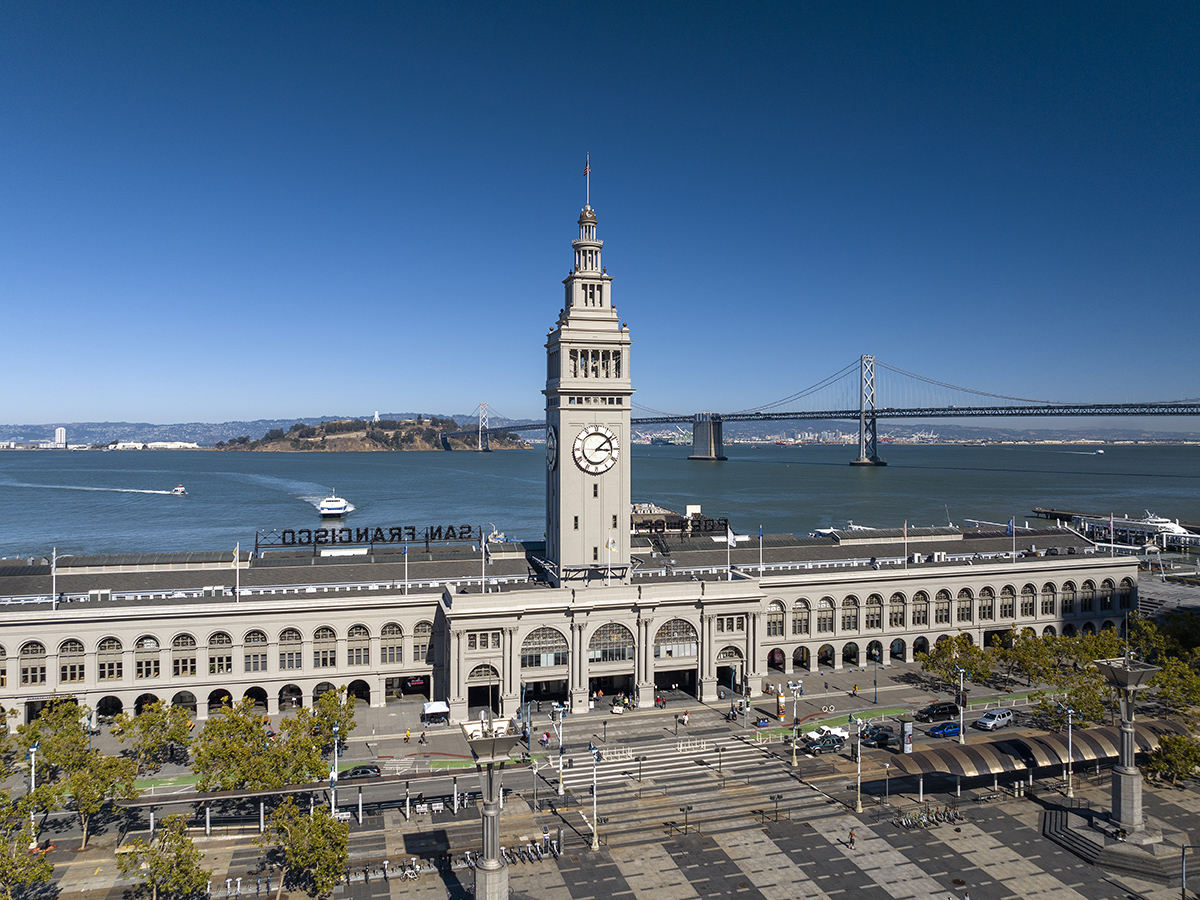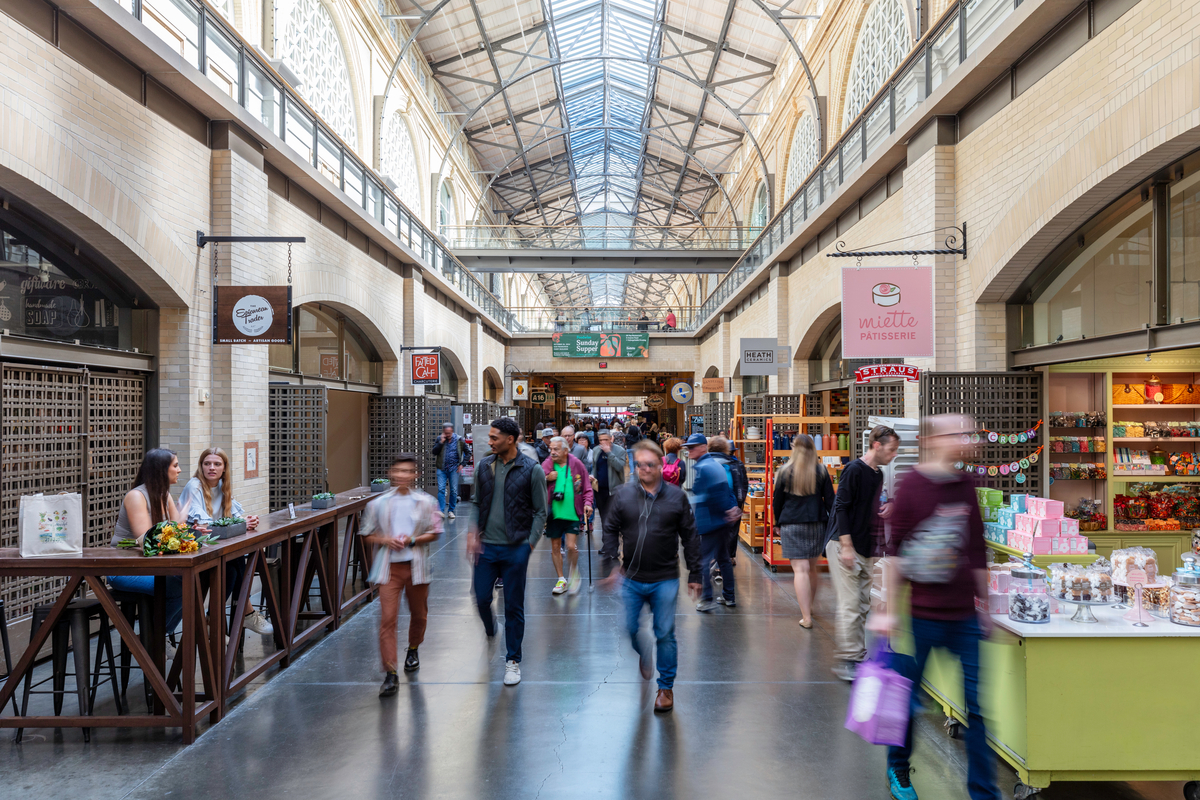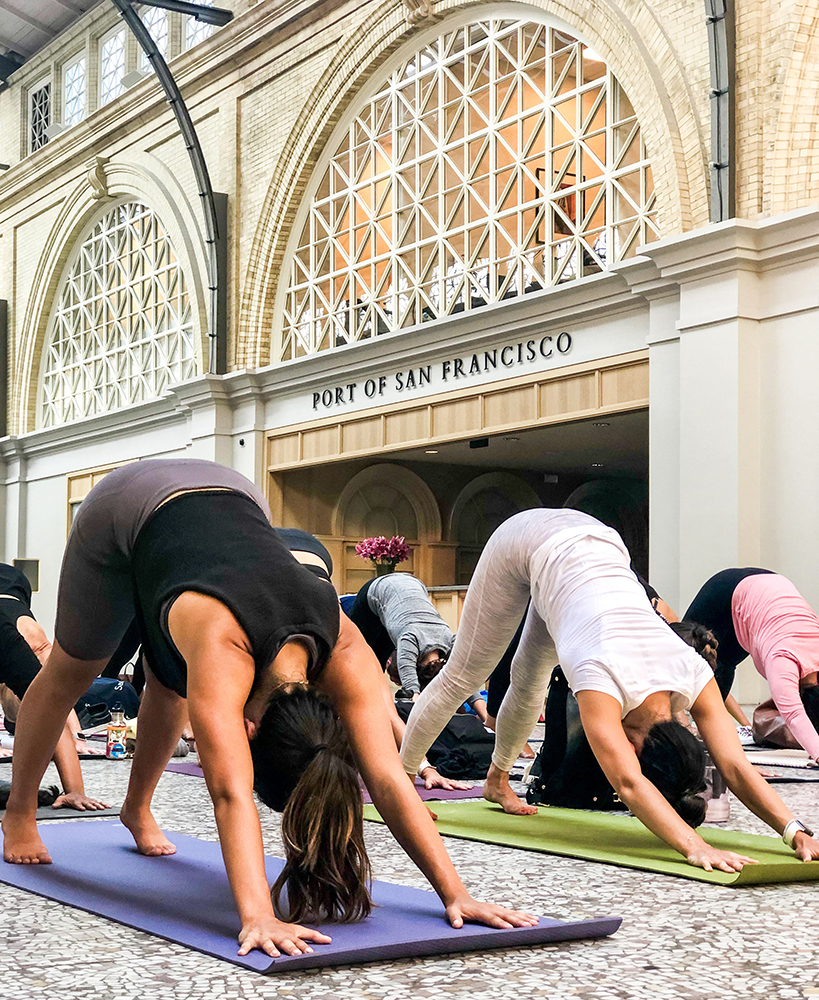
A flight to quality has been driving the office recovery. Five years after the pandemic’s start, tenants are still seeking the high-end perks that will bring employees back to the office.
In San Francisco, the Ferry Building, a mixed-use restored landmark ideally located on the scenic waterfront, has become an exemplar of how a strategic amenities package can help a building rise above a challenging market. Offering a stellar location, access to transit, an architectural personality and excellent dining options, the property is currently 98 percent leased, and it won the Gold award for Best Amenities at the 2024 CPE Influence Awards.
“The flight to quality is very real, and owners who embrace and invest in this higher standard have an opportunity to capture demand,” said Shawn McGarry, executive vice president of Northern California Office Operations for Hudson Pacific Properties, which co-owns the property with Allianz Real Estate.
The property has also helped the city’s foot traffic return to pre-pandemic levels. “We know that by activating a marquee property like the Ferry Building, we are building meaningful momentum that will benefit the entire city.”
Amenities steeped in history
Brand new construction has its benefits, but historic buildings are brimming with personality and architectural details.
The Ferry Building’s story began in 1892, when architect A. Page Brown proposed a Beaux-Arts-style design to replace San Francisco’s modest wooden Ferry House, which was erected in 1875. When the new Ferry Building opened in 1898, it was the city’s transportation focal point, with most commuters and visitors arriving by ferry until the 1930s.
Over the decades though, the Ferry Building faded from prominence as fewer people traveled by water. Eventually, when the Embarcadero Freeway was built, the Ferry Building was cut off from pedestrian traffic and the elevated structure also blocked views of the historic building. But after the 1989 Loma Prieta earthquake, the freeway was removed, and the decision was made to renovate the Ferry Building and reintegrate it into city life.
The Ferry Building’s success shows amenities are critical to attracting and retaining tenants in today’s competitive market.
—Shawn McGarry, Executive Vice President, Northern California Office Operations, Hudson Pacific Properties
The four-year $100 million restoration project—which began in 1998—included seismic and structural upgrades, the recreation of the building’s skylight and the restoration of many architectural features.
A multifaceted team of developers, designers, preservationists and financial investors led by developer Wilson Meany Sullivan won the competition with a public-private collaboration on a mixed-use concept for a world-class food marketplace and premier office space above. BCV Architects led the retail design which converted the former ground-floor baggage area into the Ferry Building Marketplace, which is now a vibrant hub for local farmers and artisans.
The Ferry Building reopened in March 2003. Today, it is listed both on the National Register of Historic Places and as a registered landmark of the city of San Francisco. The building has 175,000 square feet of Class A office space and 65,000 square feet of retail marketplace space, open-air cafés and restaurants, including the popular Ferry Plaza Farmers Market.
Class A Amenities
Tenants leasing office space in this San Francisco icon enjoy:
● Local farmers market
● Tenant mobile app
● LEED Gold and Fitwel certifications
● Private showers and lockers
● EV charging stations
● 93 Walk Score
● 100 Transit Score—access to ferries, BART and Muni
● On-site event and meeting space

An elevated experience
Over time, building ownership—the current owners purchased it in 2018—has continued to make strategic and organic improvements. In 2019, Hudson Pacific led a multimillion-dollar restoration of the historic landmark, repairing portions of the facade and repainting the exterior in a custom-blended Ferry Building gray, which represents the building’s original Colusa sandstone.
The Ferry Building’s architecture and features contribute to its status as a beloved San Francisco icon. Tenants take pride in occupying a space that is both historically significant and architecturally stunning. And according to McGarry, successful workplace environments today require much more than just traditional office space. Office users seek access to wellness, cultural and collaborative experiences that inspire teams and foster connection.
Tenant and public amenities at the LEED Gold- and Fitwel-certified facility include outdoor spaces with 360-degree waterfront and city views and on-site event space for meetings, community gatherings and private functions. And there’s also year-round programming with yoga classes, outdoor film screenings, live music, educational culinary classes and more.
“The Ferry Building’s success shows these types of amenities are critical to attracting and retaining tenants in today’s competitive market,” noted McGarry.
One of the best perks for office tenants is immediate access to the Ferry Building Marketplace, with over 50 artisan food and retail vendors, plus a farmers market three times a week.

“The evolution of amenities at the Ferry Building reflects Hudson Pacific’s ongoing commitment to creating an inspiring, vibrant destination that honors the property’s historic character while meeting the modern expectations of both office tenants and visitors to the Ferry Building Marketplace,” shared Jane Connors, general manager of the Ferry Building since 2003.
“These efforts not only elevate the experience for tenants but also help activate the broader neighborhood and waterfront.”
More than 6 million customers visit the Ferry Building each year to experience the farmers market and the rejuvenated San Francisco waterfront. The Marketplace celebrates food in all its forms, from artisan cheese to fresh local fish. Restaurants and cafes serve cuisine representing the quality and cultural diversity of San Francisco’s best chefs.
“While the building certainly benefits from its iconic architecture and waterfront location, its success is really a testament to the thoughtful approach our team has taken to tenanting the Marketplace with diverse, local merchants while activating the building to engage the community and make it a lively destination for all visitors,” said McGarry.
Further enhancements planned
Construction will begin this year on further upgrades at the Ferry Building and will be delivered in phases to minimize disruption to tenants and visitors. Page & Turnbull, the original historic architect on the landmark’s major 2003 restoration, will return as both architect and historic architect to ensure the building’s famous features are protected.

On the north side of the building facing the Embarcadero, space will be added for new kitchens and indoor seating for up to three restaurants with extended hours, bringing more activity to the building in the evenings. Outside, canopy structures with new lighting and moveable overhead panels will provide shade, weather protection, heating and flexible seating for year-round outdoor dining.
Plans also call for the ferry plaza to be repaired and resurfaced to encourage long-term growth in ferry service as a transit solution. Additionally, new electrical systems, lighting and additional outdoor seating will allow for additional public programming on the ferry plaza all week long.
“Hudson Pacific is in constant dialog with the Port of San Francisco to ensure the Ferry Building remains a vibrant part of the waterfront and leads the way on the city’s broader efforts for revitalization,” shared Connors.
Naturally, working within the context of a historic landmark presents multiple unique challenges. Every enhancement has to honor the building’s architectural integrity while meeting modern tenant and community expectations, according to Connors. This requires close coordination with preservation experts, city agencies and vendors to ensure everything done at the building is contextually appropriate and functionally valuable.
“The Ferry Building represents a rare blend of San Francisco’s past and its future,” Connors said. “These amenities are not simply additions. They are part of an ongoing evolution that ensures the Ferry Building remains an inspiring place to work, visit and gather for generations to come.”
Read the June 2025 issue of CPE.